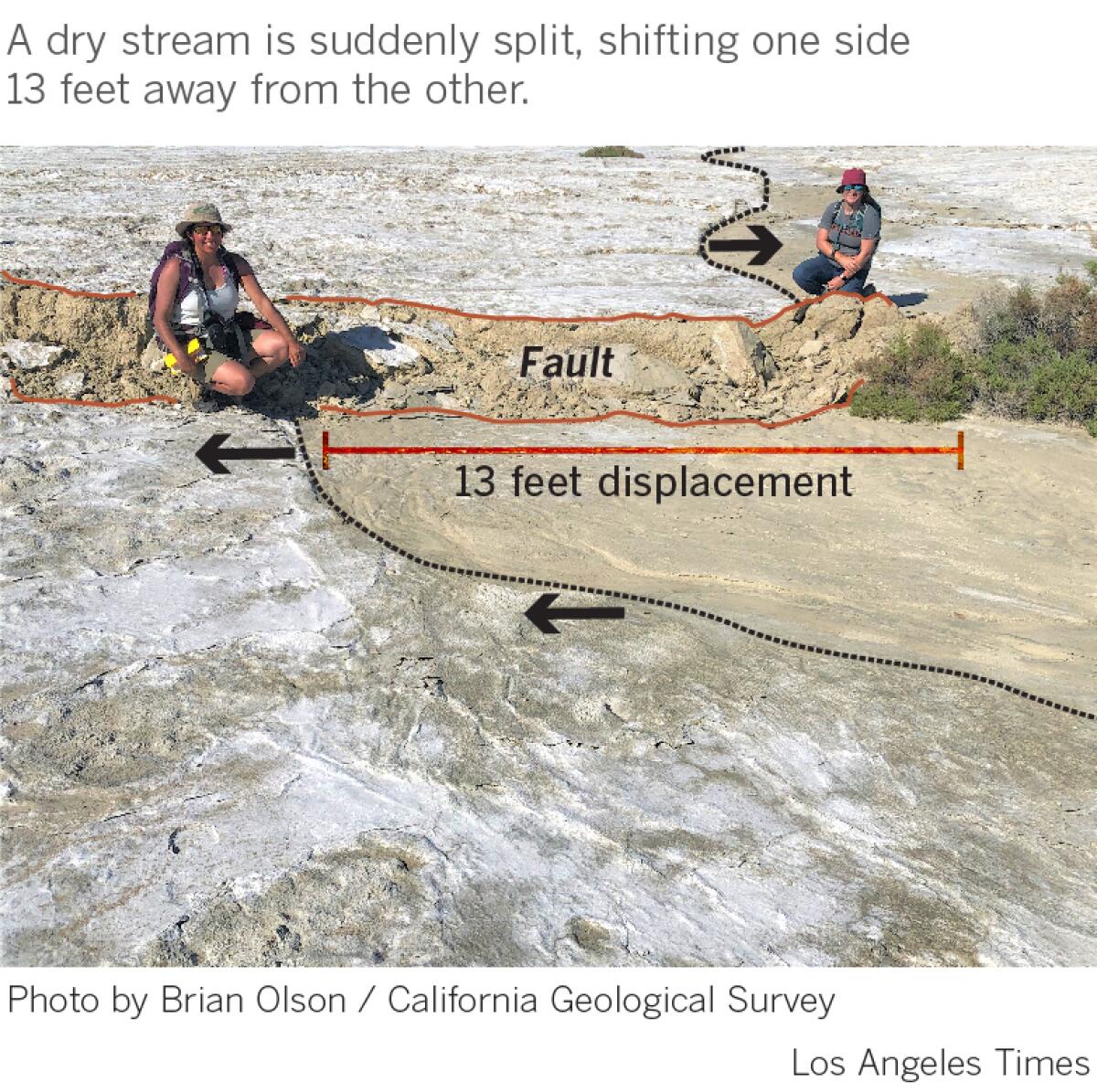More than 80,000 aftershocks and counting: Ridgecrest earthquakes keep shaking
- Share via
More than 80,000 earthquakes have been recorded in the Ridgecrest area since July 4 — the aftermath from two of the biggest temblors to hit California in nearly a decade.
Experts said the two major quakes — the first measuring magnitude 6.4, the second 7.1 — led to a particularly energetic aftershock sequence before slowing down.
The calculation, conducted by Zachary Ross, Caltech assistant professor of geophysics, comes as the earthquake sequence has continued to lessen rapidly.
The U.S. Geological Survey says the chance of an earthquake of magnitude 7 or higher resulting from the Ridgecrest quakes is 1 in 300 — possible, but with a low probability.
This activity is common in areas where there’s a high heat flow in the earth, Ross said.
Caltech seismologist Egill Hauksson said earlier this month that aftershock sequences in areas of Earth’s crust that is relatively warm can be initially quite intense but also fade more quickly, as has been seen in relatively hotter rock in the Imperial Valley.

The Ridgecrest earthquakes are relatively close to the Coso Volcanic Field of Inyo County, which is mainly within the borders of Naval Air Weapons Station China Lake, the sprawling military installation where much of the earthquake rupture occurred underneath. Coso is one of the nation’s largest producers of geothermal power.
Scientists have been urging the public to use heightened concern over quakes to get prepared, including planning for a home or apartment retrofit and securing furniture and heavy appliances to walls.
In any given week, there is a 1-in-10,000 chance that a magnitude 7.8 or greater earthquake can strike the southern San Andreas fault.
The quakes caused damage in Ridgecrest, Trona and local military installations. So far, authorities believe one person has died as a result of the series of earthquakes that began with a magnitude 6.4 foreshock on July 4 -- a 55-year-old man in Pahrump, Nev., about 95 miles northeast of the epicenter. Officials suspect the decedent, Troy Ray, was working on his Jeep underneath it when shaking arrived, causing the vehicle to fall on top of him.
Last week, officials said the aftershocks have been creeping into areas close to two major earthquake faults. Some aftershocks have rumbled northwest of the Ridgecrest earthquake, approaching the Owens Valley fault. That fault triggered an earthquake of perhaps magnitude 7.8 or 7.9 in 1872, one of the largest in California’s modern record. The Ridgecrest aftershocks have also headed southeast toward the Garlock fault, which, though lesser known, is capable of producing an earthquake of magnitude 8 or higher.
New satellite images offer a dramatic and instructive view of the immense power of the magnitude 7.1 quake. The animated slides show how the temblor permanently jolted a huge block of earth northwest while the other side of the fault moved southeast.
Some of the clearest images show long scars on the surface of the Mojave Desert, indicating precisely the 30 miles of earthquake fault — oriented in a northwest-southeast direction — that moved within moments on July 5.
More to Read
Sign up for Essential California
The most important California stories and recommendations in your inbox every morning.
You may occasionally receive promotional content from the Los Angeles Times.














